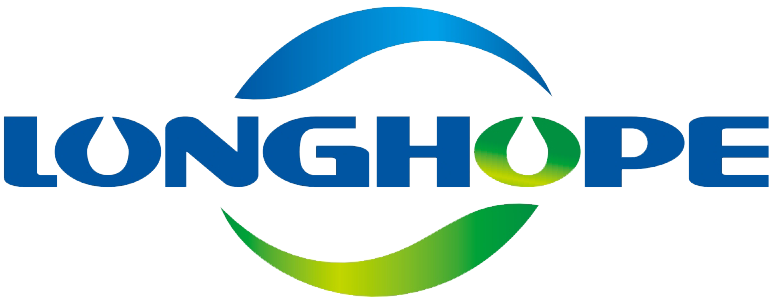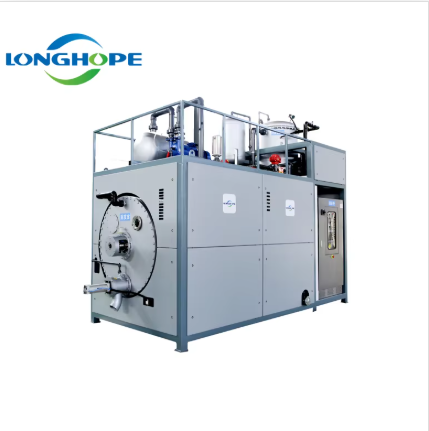Significant Reduction in Waste Disposal Costs
How Industrial Vacuum Evaporators Minimize Waste Volume
Industrial vacuum evaporators work really well at cutting down waste volume, which makes getting rid of that waste much cheaper overall. When they concentrate waste into much smaller amounts, some facilities see reductions of around 85% or even better. That means big money saved on trucking costs and what gets charged at landfills. Take for example how these machines turn liquid waste into solid material, something that actually helps factories cut back on those expensive compliance fees when dealing with dangerous substances. The financial benefits are obvious, but there's another side too environmental sustainability becomes easier when operations follow today's green rules and standards. Most plants find that investing in vacuum evaporators pays off in multiple ways, both from saving cash and looking good environmentally speaking.
Case Study: Midwest Automotive Plant Savings
A real world example comes from an automotive manufacturing site in Ohio where they saw huge savings after installing industrial vacuum evaporators. Their books show around 70 percent less spent on waste management compared to before. Instead of paying top dollar for outside waste haulers, the plant now handles most of its own waste processing, saving them roughly quarter of a million dollars each year according to their accounts department. The return on investment came pretty fast too. Environmentally speaking, there's been a noticeable drop in carbon emissions since fewer trucks need to come and go for waste collection. These systems definitely deliver good money back while still keeping things green enough to meet modern regulations without breaking a sweat.
Achieving Zero Liquid Discharge (ZLD) Compliance
Meeting EPA and EU Environmental Standards
Vacuum evaporators play a key role in helping industrial sites meet Zero Liquid Discharge (ZLD) requirements set by both the EPA and European Union for wastewater management. The technology works by turning liquid waste streams into clean water that can be reused within operations, so factories stay on the right side of environmental laws while avoiding costly fines. According to recent studies, companies that install this kind of equipment often see their water pollution levels drop around 90 percent. This dramatic cutback not only ticks boxes for green certifications but also makes good business sense as manufacturers increasingly face pressure from regulators and consumers alike to reduce their environmental footprint.
Pharmaceutical Industry Water Recovery Success
One standout case in pharma manufacturing tells of a plant hitting nearly 95% water recovery through industrial vacuum evaporation systems, which met all those tough environmental standards they have to follow these days. What they did was take the cleaned water and put it right back into their production lines, so they didn't need as much from city water sources anymore. This cut down expenses quite a bit too. Looking at this real world example shows just how much money and resources can be saved when companies get serious about water conservation. Plus, it proves that following green regulations isn't just good for the planet but actually makes business sense, encouraging other manufacturers to invest in similar sustainable practices across the board.
The utilization of vacuum evaporators provides pharmaceutical companies with a strategic advantage, enabling significant savings in water and disposal costs. Through effective wastewater treatment, these systems allow firms to manage compliance challenges while contributing positively to sustainability goals, thereby motivating more industries to embrace similar technologies.
Energy-Efficient Operation for Sustainable Facilities
Low-Temperature Vacuum Evaporation Mechanics
The low temperature vacuum evaporation technique stands out as something really special when looking at ways to save energy in industry settings. Traditional evaporation processes need way more power because they run hot, but this method works on much lower heat levels. The difference? Companies typically see around 30% to maybe even 50% less spending on energy bills. These kinds of savings cut down what factories spend day to day and help shrink their overall carbon emissions too, which matters a lot for anyone concerned about sustainability. Industries that switch over start making real progress toward greener practices without breaking the bank on operating costs.
Solar-Powered System ROI in Dairy Processing
A real world look at sustainability happens at a dairy processing facility where they installed a solar powered industrial vacuum evaporation setup. Energy bills dropped around 60 percent after switching to this renewable power source. The money saved on electricity plus reduced waste disposal fees meant the whole project paid for itself within about two years give or take. What makes this interesting is that it shows businesses don't have to choose between going green and making money. When companies invest smartly in new energy technologies, they often find themselves saving cash while helping the environment at the same time.
Eliminating Hazardous Waste Transportation Risks
On-Site Processing vs. Third-Party Hauling
Processing hazardous waste right at the facility with industrial vacuum evaporators beats sending it off to third parties for hauling. The main benefit? Less chance of spills happening during transport and avoiding those nasty regulatory fines that come with mishandling dangerous stuff. Facilities save money too when they don't have to rely so much on outside transport companies. Industry data shows savings around 40% on logistics expenses for many operations. Plus, keeping all that hazardous material inside the plant walls makes things safer for workers overall. Nobody wants accidental exposure to toxic substances while going about their day job.
Texas Refinery Liability Reduction Case Study
Looking at a refinery down in Texas gives us a good example of why industrial vacuum evaporators make sense for handling dangerous waste right where it's produced. After putting these systems into place, the plant saw their liability expenses drop by half when it came to those expensive spill incidents. Insurance companies started charging them less money each month, and there were definitely fewer tickets from regulators checking up on compliance issues. What this means is that the company wasn't just following rules but actually managing risks smartly while saving cash at the same time. By getting serious about waste management early on, they positioned themselves better within industry safety guidelines, which ultimately helped protect both their bottom line and reputation over the long haul.
High Reliability with Minimal Maintenance Requirements
Membrane-Free Design Advantages
What makes industrial vacuum evaporators so special? Their membrane free design cuts down on clogging problems and equipment failures. Facilities find this really helpful because they need less frequent maintenance and face fewer production stoppages. Industry data shows these systems run reliably about 98% of the time, way better than most competing technologies on the market today. For plant managers watching their bottom line, this means real savings over time. Many manufacturers have switched to vacuum evaporation simply because downtime costs money, and nobody wants to deal with constant repairs when there's a better alternative available.
98% Uptime vs. Traditional Reverse Osmosis Systems
Industrial vacuum evaporators typically maintain impressive uptime rates around 98%, way better than old school reverse osmosis systems that struggle at about 75% uptime on average. The difference really matters for day to day operations since equipment running smoothly means more work gets done without those frustrating interruptions. Looking at real world numbers, factories switching to vacuum evaporation tech often see production jump by roughly 20%. That kind of boost makes sense when considering the upfront costs involved. Manufacturing plants especially benefit from these improvements as they need consistent operation to meet demand deadlines. Companies investing in this approach generally find themselves saving money over time while keeping their production lines humming along efficiently month after month.
Frequently Asked Questions (FAQ)
What are industrial vacuum evaporators used for?
Industrial vacuum evaporators are used to reduce waste volume, achieve ZLD compliance, and improve operational efficiency. They concentrate waste into smaller quantities, minimizing disposal costs, converting liquid waste to solid forms, and supporting environmental sustainability.
How do vacuum evaporators help achieve ZLD compliance?
These evaporators eliminate liquid effluents by converting them into reusable water, assisting industries in meeting stringent EPA and EU environmental standards, thus preventing penalties and supporting sustainability.
What are the benefits of low-temperature vacuum evaporation?
Low-temperature vacuum evaporation aligns with energy efficiency goals, reducing operational expenses by 30% to 50% and improving ecological impact. It operates with less heat, contributing to cost savings and sustainability.
How do vacuum evaporators enhance safety in hazardous waste management?
On-site processing of hazardous waste with industrial vacuum evaporators reduces the risk of spills and regulatory fines, enhances workplace safety, and cuts logistics costs by up to 40%.

